This weekend will see the last of Crossrail‘s mass tests on the Elizabeth line as it nears its opening date, and ahead of that, a group of us were given a sneak preview of what it’s like to ride at speed through the new tunnels.
Starting at Paddington, a quick, very quick and smooth, trip to Liverpool Street was on offer, and a chance to have a look at the two completed stations.
A clearly very excited Mark Wild, Crossrail’s CEO was keen to show off not just the stations and railways, but also some of the subtle thinking that’s gone into them — with a host of facts for future pub quizzes.
There were also more details given about the final stages to be completed before the line can open to paying passengers, and what happens when it opens.
Something which was confirmed is that TfL Rail, the unexpectedly long-lasting temporary brand name used for the services running into Paddington and Liverpool Street will be switched over to the Elizabeth line brand on Day One of the core tunnels opening. TfL’s Chief Operating Officer, Andy Lord confirmed some of the details about how TfL Rail will transition to the Elizabeth line. He anticipates that the TfL Rail brand will start to be replaced with the Elizabeth line on trains and platforms probably a couple of weeks before the Elizabeth line opens. It can’t be done overnight due to the sheer volume of work to be carried out.
With the exception of the Waterloo and City, and the Victoria lines, every other tube line connects with the Elizabeth line, and they will all need station maps, line maps inside trains and all the other messaging to be replaced. Some will be newly made signs, but where they can, they will look to the same idea used for the Northern line extension, which was to put full-size vinyls over the old maps, so there’s a clean neat appearance, without spending a fortune on new enamel.
There’s also some testing going on in the stations with some temporary signs to be used at Liverpool Street for people coming from the west who need to change for the mainline service to Shenfield, as the tunnels won’t connect to that service until later this year.
Before that, there’s more testing to be carried out, and Mark Wild offered some insights into what’s left to do.
The final mass test takes place this weekend, with over a thousand TfL volunteers. Then the formal testing is over. From next week, the line will enter two weeks of Shadow Running, to bed in some more experience. Then it’s over to the rail regulator to sign off on the railway as fit and safe to open. That’s likely to take another month, so towards the end of April. While that’s going on, the roughly 1,000 staff working on the Elizabeth line will spend more time practising and getting experience in running the railway as a live service. Another software update for the trains is due in Easter to deal with some lingering reliability issues.
TfL’s CEO, Andy Byford has repeatedly stated that the line won’t open until he is confident it’s a reliable railway. He doesn’t want another Heathrow Terminal 5 debacle on his hands.
So, at the moment, baring any other issues, a few weeks after Easter could be when the line opens, but still within the target of the first half this year.
When it opens, the core will have 12 trains per hour with 9 carriages per train, running between Paddington and Abbey Wood. When the Shenfield branch connects later this year, that ramps the service up to 22 trains per hour in the core, with some reversing at Paddington, and others going on to Heathrow and Reading.
But, the line is built for more than that.
If it’s needed, the Elizabeth line has the capacity to run 30 trains per hour through the core tunnels, and the trains could be extended to 11 carriages from the 9 at the moment. A line that adds about 10% extra capacity to the central tube network, especially on the Central and Jubilee lines, could grow by another quarter if needed in the future.
Starting at Paddington, as a new station box, it’s so large that the Shard could lie on its side and fit inside, with space to spare. As large as the public spaces look, they are actually smaller than the back of house facilities. The back of house spaces has around 500 rooms, and is in total, some 20% larger than what the public will see. A reminder that most of the stations on the Underground are often far larger (and expensive) than they look at first sight.
The very distinctive brickwork on the side walls are in old Imperial sizes to echo Brunel’s station next door, and the panels are built to the same standard as Brunel’s original 10-foot square. The clouds on the glass ceiling artwork at street level are made up of real cloud shapes, that would not usually be seen together in the skies at the same time.
Something though that was added to Paddington station after the funding was approved was a new direct deep tunnel link from the platforms to the Bakerloo line. London Underground contractors built the link, and Andy Lord suggested that they are considering opening up the link before the Elizabeth line opens fully as it would help with offering step-free access for Bakerloo line customers.
At the other end of our preview journey, famously within Crossrail lore, the station at Liverpool Street joins up underground with Moorgate station, and TfL is expecting to have to do some educational work for people who might for example arrive at Moorgate on the Northern line and think they need to catch the tube to Liverpool Street, when in fact they could just walk through the Elizabeth line station. There’s a central corridor between the two platforms on the Elizabeth line specifically to assist in that.
It’s also a station with something that’s likely to become a bit of a tourist attraction when it first opens, two incline lifts that run alongside the escalators. The novelty of them in central London means I expect a lot of people will take a trip in them at least once, just so say they have.
Something else that can be seen is at Liverpool Street and will hopefully never be needed, are some huge fire doors in the passenger tunnels, that are rated to hold back a fire raging at 3,000 degrees for up to 2 hours. To put that into context, it would probably need two trains to arrive at the station at the same time and both be suffering catastrophic fires. Which has never happened before anywhere, but the fire doors will cope if it did happen. They never want another King’s Cross on the Underground, so fire safety is taken seriously in the station design.
Built by Booth Industries just outside Manchester, these are the second set of fire doors for this space, as the first set was sent to Germany to be deliberately destroyed in a fire test. Why Germany? Because it’s the only place that had a furnace testing rig large enough and also able to deliver the necessary amount of heat for long enough to doors as large as these. They’re the largest fire doors on the Elizabeth line.
A lot of the effort that’s gone into the project goes into the safety systems, and that’s often been the cause of some of the delays in completing the stations. Most of the systems are hidden away, but some are visible. In total, there are 10,000 fire safety doors on the Elizabeth line, some of them supplied by Rhino Doors, who also carried out fire tests on their designs.
Talking of doors, the drivers’ cab doors on the trains… turns out that they’re bulletproof. Just in case.
I’ve written over 300 articles about Crossrail over the years, from early public consultations, through station mockups, standing on mud deep under the stations before the concrete was poured, on engineering trains growling their way through tunnels, and in many of the stations as they’ve turned from empty shells into finished stations.
And yet, this was the first time I had been in an Elizabeth line train running at full speed through the core tunnels. The trains are already running out of Paddington and Liverpool Street, and I’ve been on them many times. However, there’s still something intangibly exciting about getting onto the trains for the first time to head through central London at speeds that are frankly, still quite surprising. You feel the acceleration as the trains leave and barely enough time to settle before we’re pulling into the next stop, which would have been a good 10-15 minutes on the tube.
And the journey is so smooth. It’s a new floating slab track and apart from the curves and gradients, it’s difficult to feel much vibration in the train. It reminds me of when the Jubilee line extension opened, and you could tell when you swapped from the old to the new because the ride suddenly switched from rough to smooth. The same happens as Elizabeth line trains come off the mainline railway and into the tunnels.
With the frankly, really annoying irritation of Bond Street not opening with the rest of the line – it’ll be about 3 months later – I think it’s going to be a shock to the public when they start using the Elizabeth line.
The passenger tunnels are huge, the station platforms are huge, the trains are huge. There are so many clever ideas in how they convey information on the display screens embedded in the full height platform edge screens. The lighting is subtle and delicate, and the curving walls add a sense of style and occasion rarely seen since the time of Charles Holden.
People will be arguing over the causes of the delays and budget overspending for years, although the general gist of what went wrong is pretty much understood now, and those learnings are already feeding into other projects such as HS2 to ensure they don’t suffer the same problems.
But what can’t be denied is that what’s been built is astonishing.
The Elizabeth line, it’s late, it’s over budget, but oh, it’s so very good.
And not long until everyone can go down into the stations and gasp for themselves.
Some photos
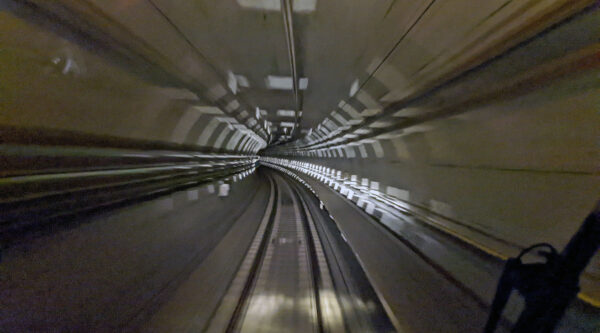
Whizzing through the tunnels – notice the right side walkway for passengers if needed in an evacuation.

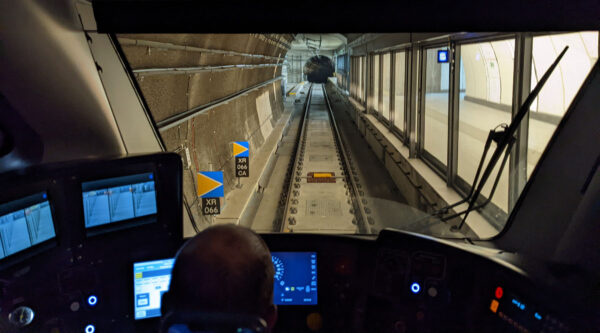



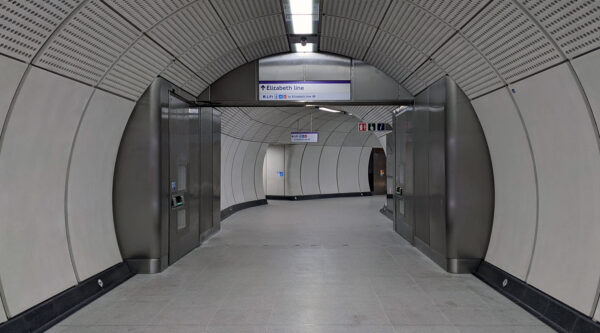
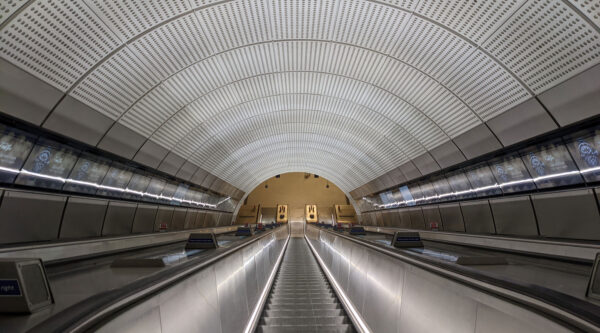
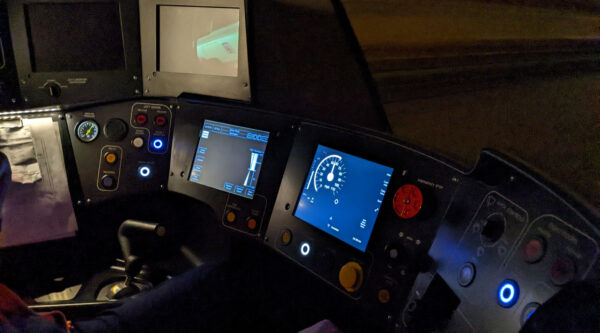
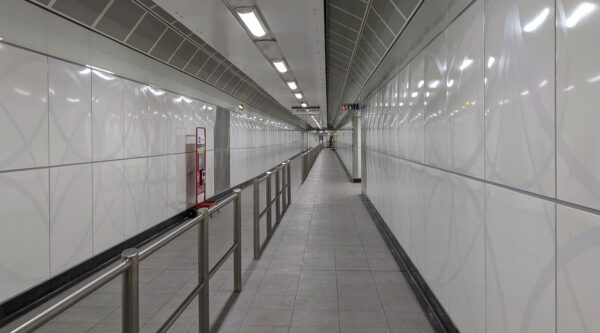

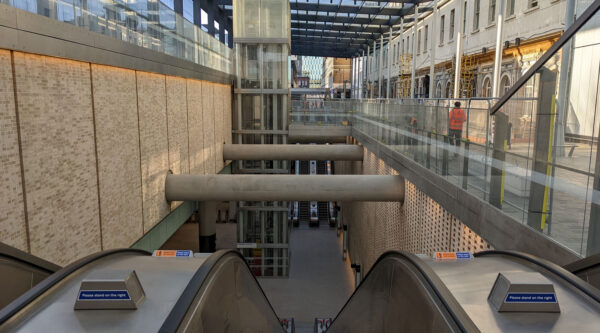
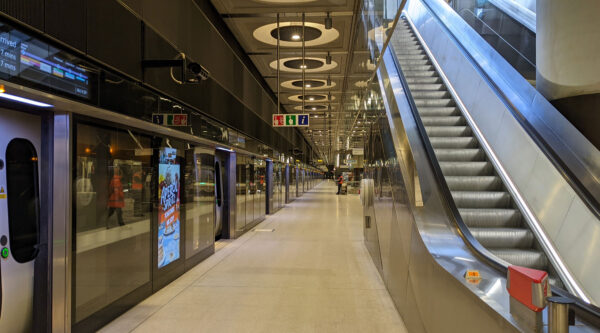


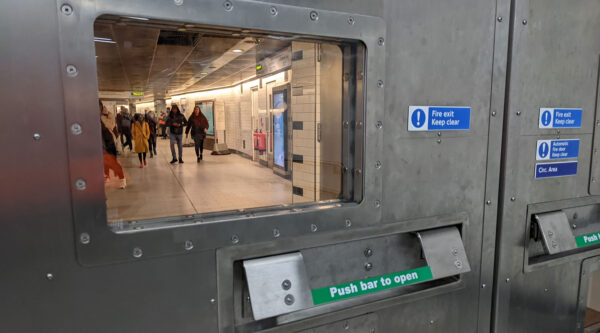
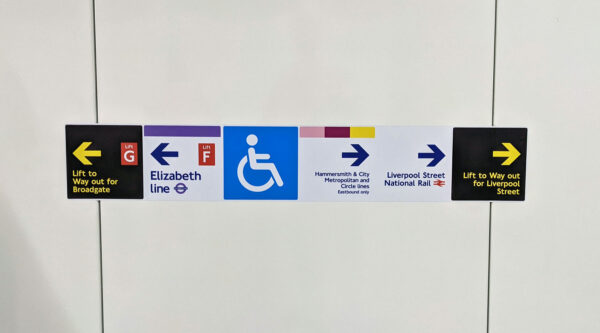
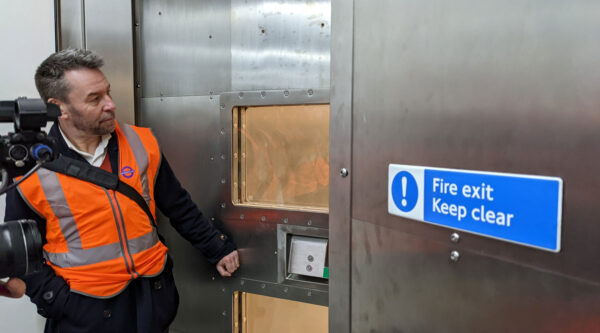







“will be switched over to the Elizabeth line brand on Day One of the core tunnels opening”
I find it odd that you failed to notice you already had that news on your site last week in “Free booklet about the Elizabeth line” ( 23 February 2022) as it in there in the PDF on page 5.
Perhaps not all of Ian’s readers scour his articles so diligently as you Brian, and may benefit from some repetition.
Wow, just generally wow.
So much to look forward to here!
(although you did mention the need for “another software update”, and my goodness there have been a lot of those, so fingers crossed…)
Was going to point out the error on your last Crossrail article about TfL Rail continuing after central services launch, but Ian has pointed it out well.
Surprised nobody is calling it the Liz Line!
Possibly because that’s not its name?
No-one refers to the Vicky Line. Do try to call down!
Everyone calls it the Vic. I’m sure the new line will become the Liz before long. I’m still going with Unsweaty Betty though.
Lizzy Line!!
I call it the Liz line 😂👍🏻I am looking forward to the opening. ☺️
Lol at the Bakerloo link, is that as narrow as it looks? Did they make that narrow and mid-barriered to keep with the design ethos of the existing bakerloo line station?
Pre-Covid, TfL’s obsession with mid-corridor barriers especially in the walkway between the C,D, and M line and the main ticket hall at Kings Cross was incredibly annoying and probably dangerous.
Quite the opposite, they are a safety feature and help reduce crushing if there was a panic. The Bethnal Green disaster was, in part, caused by the lack of central separation barriers on the stairs.
The signs ‘Board here for level access at all stations ‘ gives the impression that ALL Elizabeth Line stations have level access when of course this doesn’t apply to old surface level stations !
It’s a pity funding was not provided to complete step free access at Paddington and Liverpool Street Stations to all circle line platforms given they are main line stations.
Given the sheer length of the interchange subways I do wonder whether seating should have been provided for elderly and disabled passengers who need to rest because of health problems.
As to the future I do wonder if Crossrail 2 is still needed or whether investment would be better spent on extending the DLR from Bank to Euston and Victoria and building more short Thameslink style connections between mainlines ( e.g London Bridge to Waterloo- Clapham Junction) with maybe the Overground at Euston diverted into a Thameslink style sub surface Station for future extension across Central London to either Charing Cross or Victoria to again provide a cross London link
The sign does not give that impression at all – any more than similar signs on for example the Jubilee line give that impression.
What makes you think there aren’t some seats in the interchange tunnel?
Don’t the surface level stations have a section of raised platform to allow level access? And they have all been modified or rebuilt – if anything the delay in opening the Central Core does mean that work on the surface stations will now be virtually complete when it opens.
Why extend the DLR to Euston? I think it would be cheaper to close Aldgate and Aldgate East, extend the Metropolitan beneath the District Line at a new Aldgate Met/District Interchange in the vicinity of the bus station, and then join with the C2C line at Shadwell to give a new regional metro from Aylesbury to Shoeburyness with 36tph on the junctionless Harrow-Barking core, a 44% capacity increase at Euston Square. Baker Street Circle platforms would be the terminus for services to Hammersmith, Wimbledon, and Barking via Victoria – after all, the Circle from Paddington to Liverpool Street is redundant soon, and the Circle from Paddington to Euston is redundant when HS2 joins Old Oak Common to Euston. Selling Fenchurch Street and the viaduct leading to it partly pays for the scheme.
DLR to Euston, St. Pancras and Victoria is to me a no-brainer.
Living in Dalston, I also want the planned additional station on the Central Line at Shoreditch High Street.
Crossrail 2 isn’t needed in the East, if a Lea Valley Metro were to be created, with all the trains terminated in the double-track loop at Stratford, where they would connect to Crossrail.
“With the exception of the Waterloo and City, and the Victoria lines, every other tube line connects with the Elizabeth line”
except the Piccadilly line.
The Piccadilly & Crossabeth do/will meet… at Heathrow. (Sure, it’s not much use as an interchange, but it exists.)
Do we know how the line’s going to be officially opened?
These phased openings make perfect sense but risk stealing the thunder of the big day itself, if indeed there is to be one.
I picture HMtheQ waiting on the platform (of Bond Street?) whilst the chilling voiced countdown from Diamonds are Forever comes over the public address system ~ “six minutes und countink” and then the train pulls in driven by Daniel Craig.
Where to cut the ribbon though? Through the carriage doors as her Maj. gets on?
No, much better across the track with driver Bond stood aside and the Queen flooring it, testing the celebrated acceleration.
Thanks for the interesting article. I’ve been looking forward to the line opening for a long time! Was there any mention about how much notice we might get of an opening date? Thanks!
The percentage increase in capacity from 24 trains @ nine carriages to 30 trains @ 11 carriages is 100 *(330-216)/216 = 100 * 114/216 = 52.8%.
The capacity of this line is mind-blowing. One hopes that the modifications required to add that 50+% aren’t too onerous. I’d be interested to know what they would be …
Several of the suburban stations aren’t even long enough for 9-car trains. It’s a shame that they aren’t running 11 car trains from Shenfield to Paddington now so that they could get rid of the messy peak Liverpool Street terminators.
When a train is sat in a station, will there be gaps at each end of the platform for where the two extra carriages would go if they expand the trains in future?
It’s good that they’ve now decided to re-brand the existing TfL Rail when the core section opens. I recall that the core section was going to be Elizabeth line, but the outer (Shenfield / Reading) sections were going to remain as TfL Rail until the whole of the Elizabeth line was connected.
How is it good to have three separate services named as the same line? How does it help radio presenters to explain to people which bits of railway have gone tits up this morning? I think keeping the other services as TFL Rail is so obviously the right decision that my mind is blown by the fact that they haven’t done it. Although at least it is consistent with their decision to colour every line in Hackney orange so that the Hackney part of the tube map looks like a bowl of spaghetti.
It will always be “Crossrail” to me haha
Excellent update Ian. Thanks for sharing. As a Northerner I have followed progress with a mix of admiration and jealousy, however I can’t wait to visit and have a ride and see it in all its glory for myself.
No doubt one will get used to it but I’m not sure the lack of any display indicator facing up/down the platform is helpful. Yes I get that everyone should be in sight of a platform door one, it just seems odd.
Gentlemen:
Stop quibbling. The new line looks magnificent – with whatever nickname you choose. Thank you, Ian, for so many reports! I can’t wait to see it in person.
I hate the idea of stick on signs. While compared to the whole project it’s a tiny tiny thing, you might as well do it properly given the money that is being spent.
I’m here over in Ealing getting excited! It’s gotta be close.
“Paddington, as a new station box, it’s so large that the Shard could lie on its side and fit inside, with space to spare”
I always wondered what it would take to boggle my mind. Now I know.